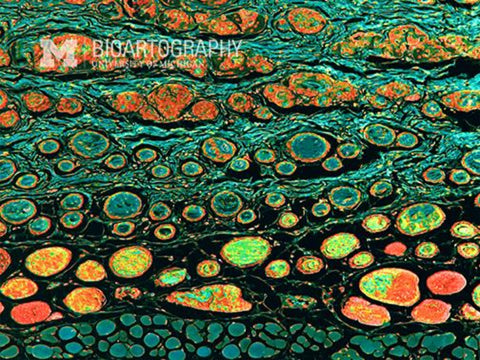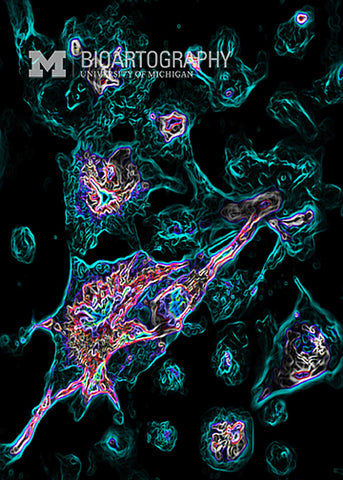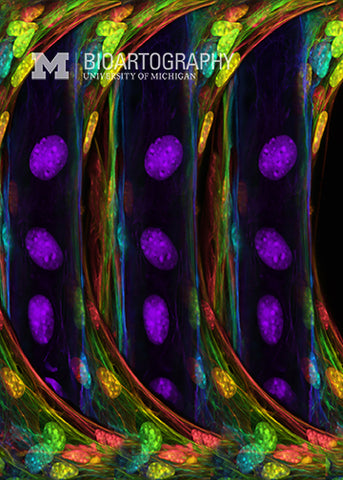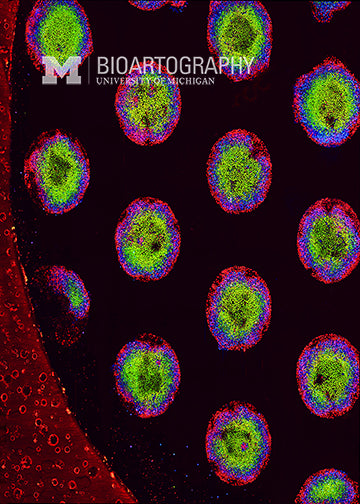
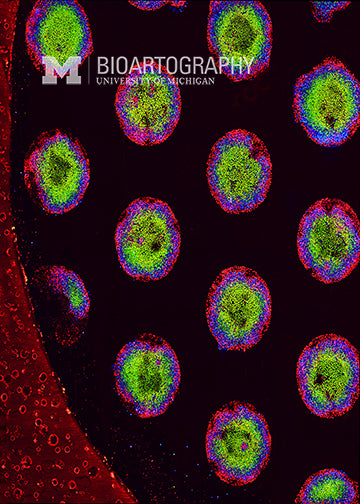
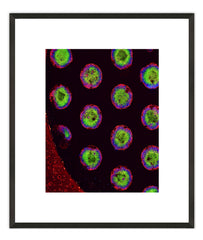
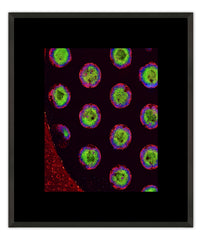
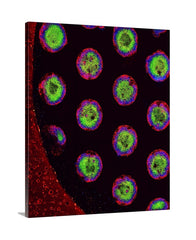
Kyoung Jo, Ph.D., Postdoctoral Fellow (Heemskerk Laboratory), Department of Cell and Developmental Biology, University of Michigan Medical School
How can a handful of pluripotent stem cells in the very early embryo give rise to every cell type (cell fate) that makes up the body? One of the first fate “decision points” is the generation of three main lineages of cells: ectoderm, which will give rise to neurons and skin; endoderm, which will generate the lining of the digestive tract and lungs; and mesoderm, which will produce bones, muscle, blood and some internal organs such as the kidney. Interestingly, when pluripotent stem cells are plated onto tiny micropatterns in a culture dish, they differentiate into concentric rings of different cell types, crudely mimicking the process by which the three main cell lineages of the body are established during embryogenesis. Here, we can see ectoderm cells (green) in the center with endoderm/mesoderm cells (blue) surrounding them; the red outer ring consists of extra-embryonic cells that play a supportive role during development. Studying how these fate patterns are generated will help us crack open the black box of early human development.
20-031

